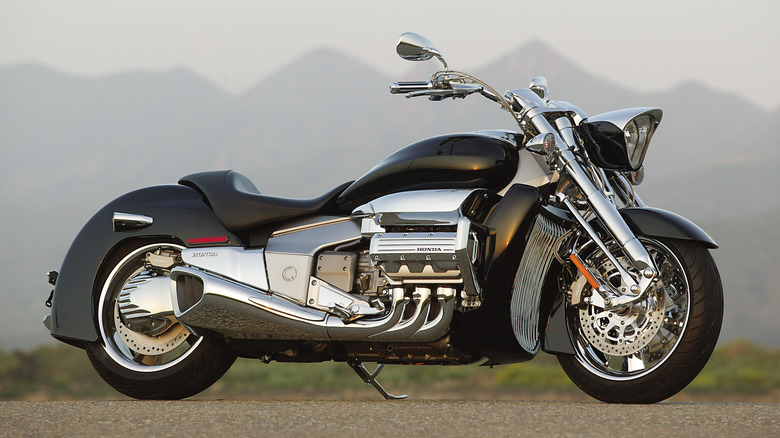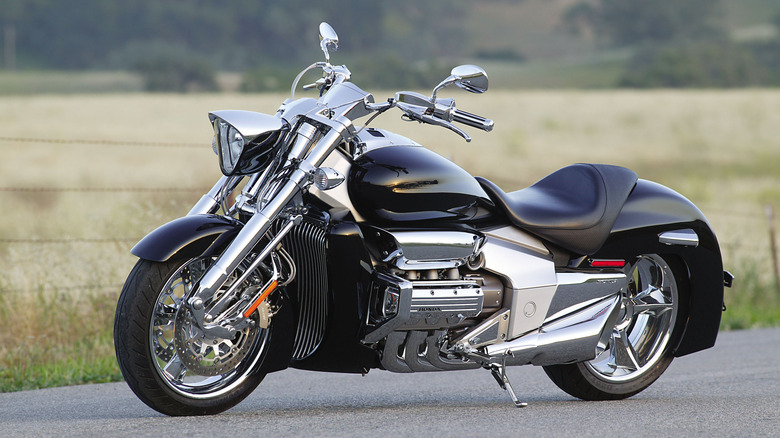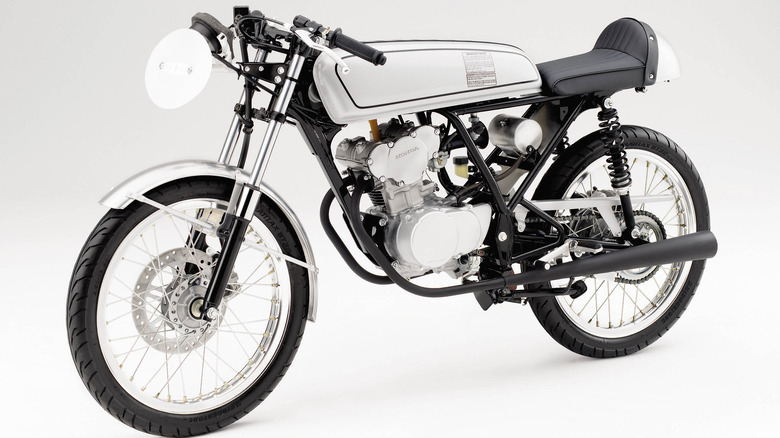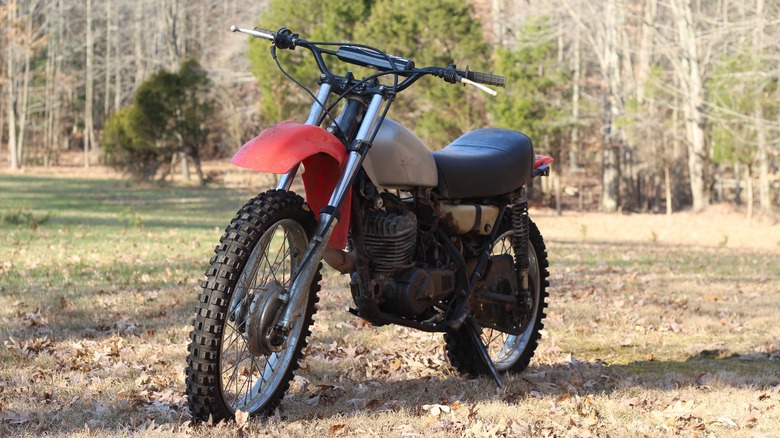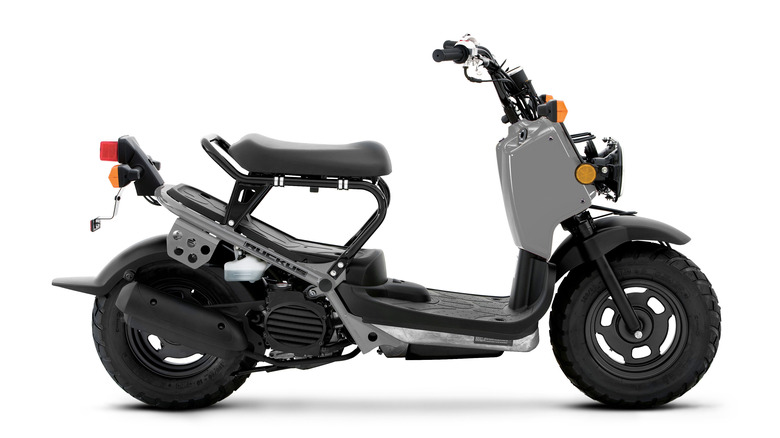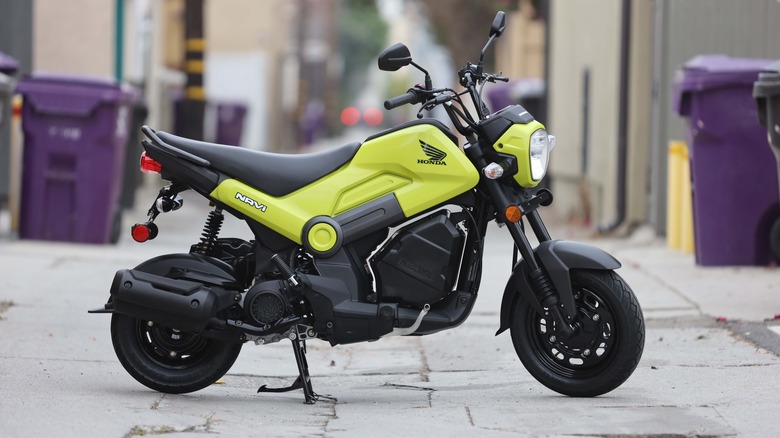5 Of The Most Underrated Honda Motorcycles Ever Made
Honda is one of the world's leading brands in not only cars but also two-wheeled transportation, and it'd be disingenuous to say that contemporary motorcycles and scooters like the current Honda Shadow, Goldwing, Rebel, CBR, Cub, and CR dual-sport bikes are exactly "underrated." Hondas have been a favorite of riders for decades essentially all over the world.
But, there are a few bikes in Honda's current lineup and historical offerings that didn't get the attention they deserved. Such bikes could have been good in their own right but got overshadowed by much better bikes, or they just occupied an awkward place in the market and got passed over in favor of other offerings. Either way, some of Honda's unsung heroes deserve another chance at the spotlight. Not everything can explode in popularity and become the most popular vehicle in history like the Honda Cub, which has sold well over 100 million units, but every bike warrants at least a second look after its launch.
Honda Rune
The 2004 Honda Rune looks more like something that would come out of "Warhammer 40,000" or "Final Fantasy" than a bike Honda would sign off on. Honda's research and development department was given a blank check to come up with whatever design they wanted and the Rune was the result. That bike, based on the Zodia concept from 1995, was groundbreaking on both a technology and styling front.
It featured racing-style suspension right off a MotoGP Bike, the biggest brakes ever put on a Honda at the time, and a 1,832cc six-cylinder engine that was seen in the GL1800 Goldwing. The Rune had a bizarre triangular front headlight, a radiator grille that looked like it came off of a hot rod from the 1930s, and chrome over a good 70% of the bike. It also looked like it was as long as a city block. Honda's styling department was not messing around with the Rune.
Honda CB50R Dream
Race bikes that are popular today like the Honda CBR100RR and Yamaha YZF-R1M have engine displacements that approach 1000cc and are capable of reaching wild speeds in a short period of time. After all, as the old adage says, "there's no replacement for displacement." However, in the 1960s, Honda experimented with race bikes that had the tiniest of engines buried in its frame. One such bike was the RC116, a 50cc four-stroke bike that could top out over 100 mph.
To pay tribute to the smaller and more adorable side of racing, Honda released the track-only Honda CB50R Dream. It rolled out of the factory in limited numbers in 2004, but it bears a striking resemblance to a cafe racer bike from 40 years prior. The bikes from the 1960s had two-cylinder engines, while the reissue only had a single pot. Honda took a break from making superbikes that would make an insurance adjuster start crying and made a diminutive little bike that could rev to 13,500 rpm.
Honda MT250
Dual-sport bikes are about as close as you can legally get to driving a dirt bike on the road. Now, dual-sports are fairly commonplace, but that was not always the case. In 1974, Honda released what was essentially a road-going version of its CR dirt bike, the MT250. It had turn signals, a big headlight, a place to mount a license plate, and was overall a little tamer than the CR250. Specs-wise, the two-stroke wasn't particularly a trendsetter compared to its racing siblings, and reviews weren't always kind to the bike when it was new in the 1970s.
Despite that, the MT250 succeeded in being a comfortable, easy-to-ride bike that wasn't going to win any races, but was more than capable of handling itself on rougher terrain without any fuss. If you weren't trying to compete in motocross but wanted a bike that looked a little more aggressive and dirt-worthy, then the MT250 was a tempting option. Unfortunately, Honda only made the bike until the 1976 model year.
Honda Ruckus
Honda excels at no-fuss transportation and the Honda Ruckus is just that — although its 49cc single-cylinder engine is unlikely to cause a ruckus, at least with your wallet. At $2,899 for a brand-new Ruckus, it's one of the cheapest new vehicles you can currently buy and the second-cheapest Honda scooter next to the Honda Metropolitan, which is priced at $2,599.
The Ruckus is exactly a form of transportation and basically nothing else; it's two wheels, tube steel, a one-speed automatic transmission (yes, really only one speed), and a single cylinder lazily vibrating in the engine. That's about it. It has a fuel capacity of a scant 1.3 gallons. That's practically a thimble's worth of fuel compared to a huge cruiser motorcycle. That single tank of gas is more than enough, though, as Honda says the Ruckus can achieve up to 114 miles per gallon. Not bad for a scooter.
Honda Navi
Honda's Navi looked kind of like Honda's Africa Twin adventure bike if it was scaled down; it looks like it would be more at home in "MarioKart" than riding the streets, but don't let its appearance dissuade you. The model has a 109cc single-cylinder engine that lends itself to efficiency and reliability. For newer riders, the short little Navi is easy to hop on and doesn't lend itself to the hunched-over "hold on for dear life" riding position of a sportier bike.
Likewise, the Navi is equipped with a continuously variable transmission that eliminates the need for manually shifting gears that may turn off new riders. It also shares a name with Link's fairy companion in the "Legend of Zelda" games, so that's always a plus. Not every odd-looking bike in the world needs to melt your face off with speed or performance. The Navi outdoes other bikes when it comes to quirky, yet uncomplicated riding.
